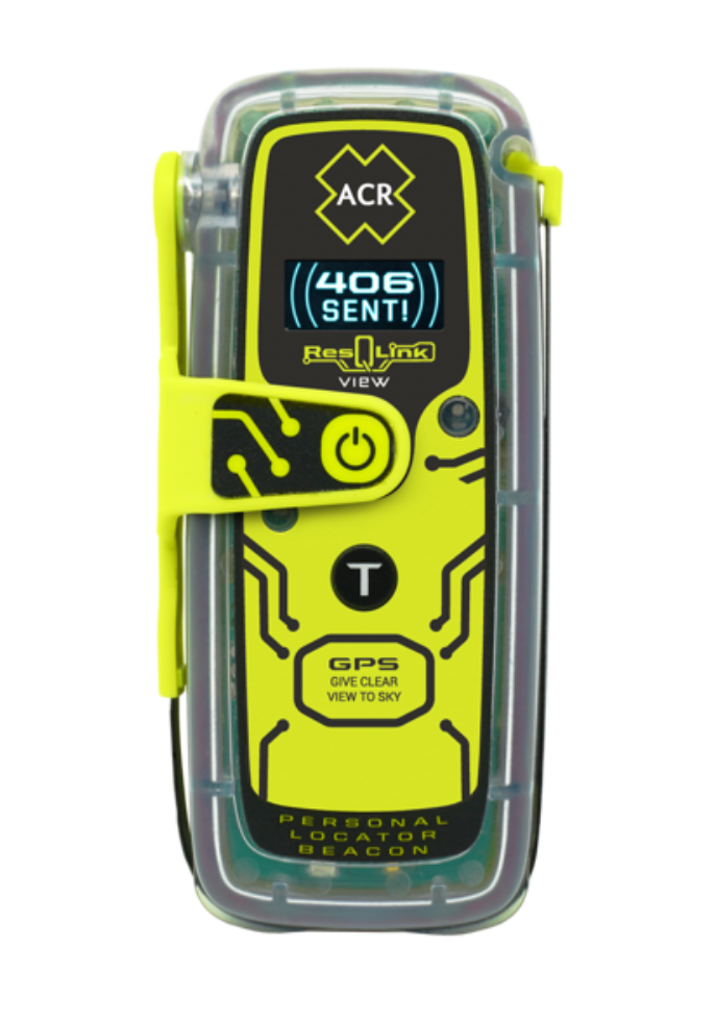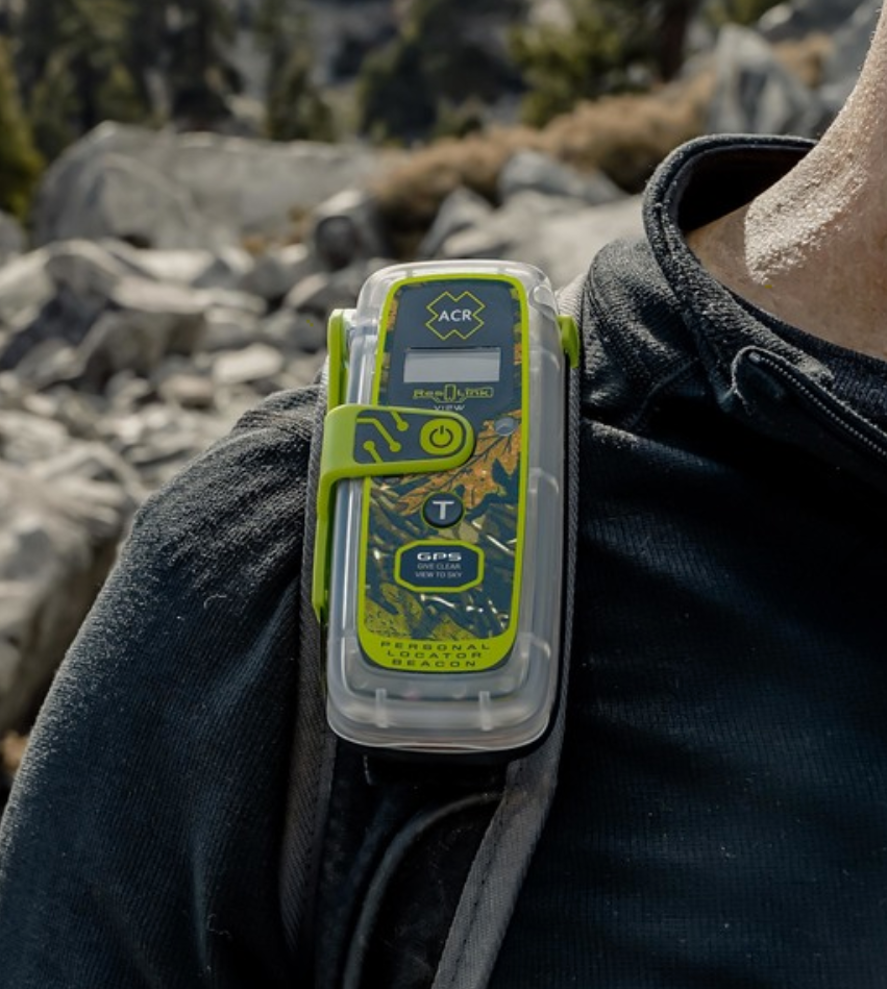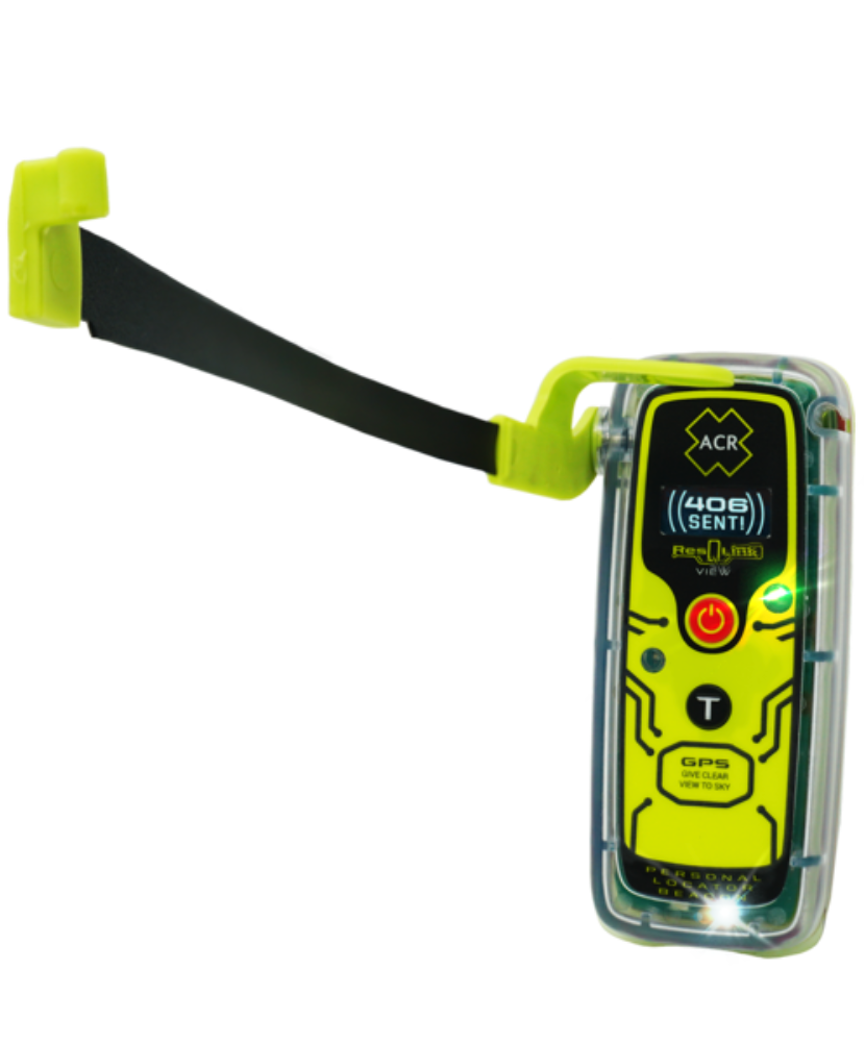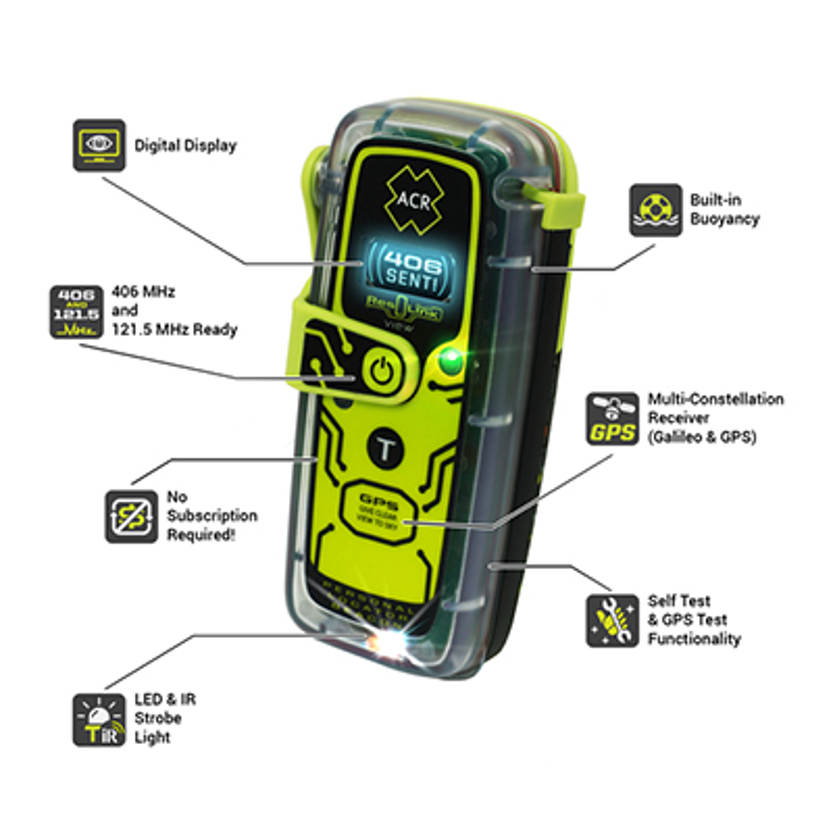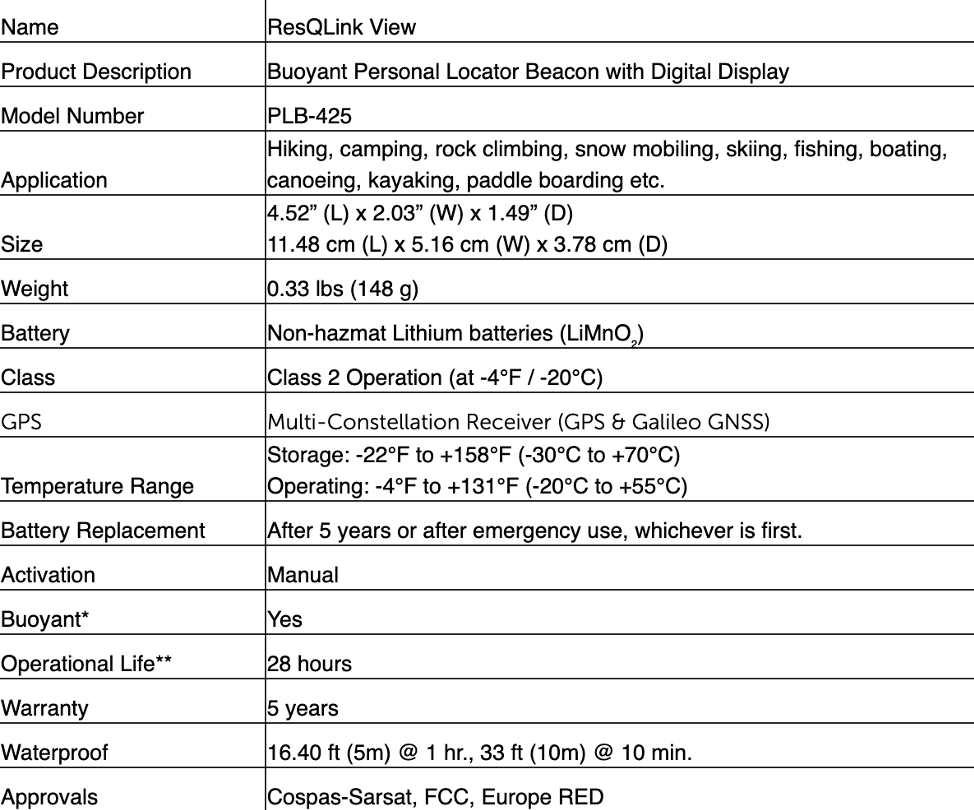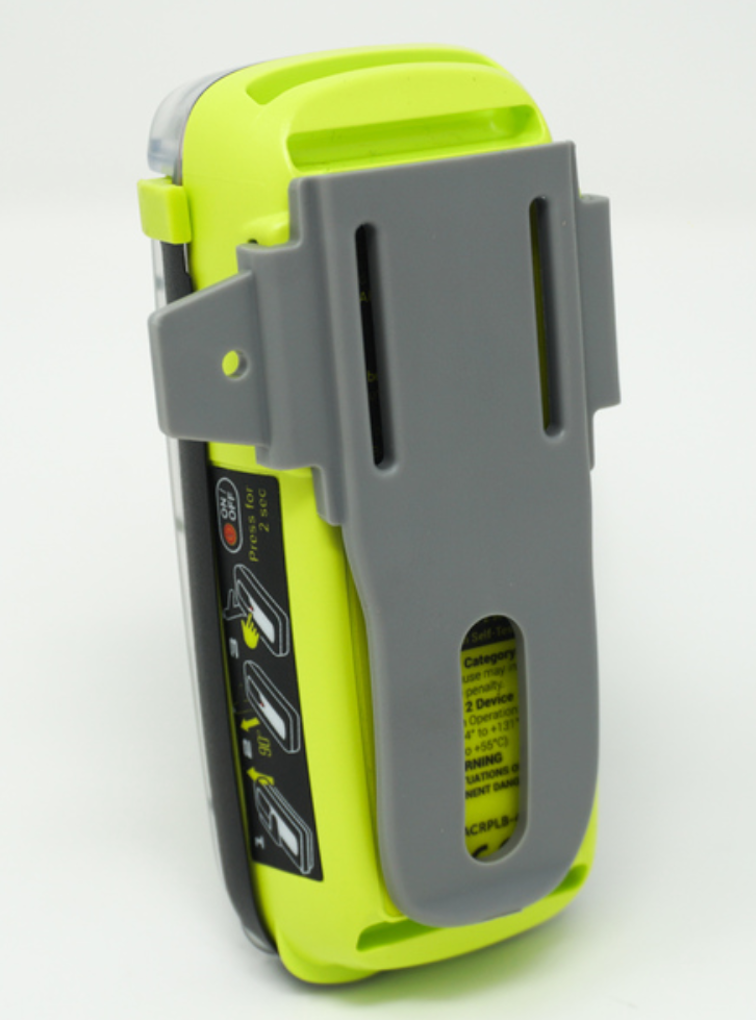ACR ResQLink Personal Locator Beacon
The ACR ResQLink View is a buoyant Personal Locator Beacon that requires no subscription and includes a digital display that provides live status and GPS coordinates. It earned an Innovation Award at the Miami International Boat Show in the Consumer Safety Equipment category.
Editor's Report by Eric Colby
For more information on the ACR ResQLink, click here.
Brief Summary
The ACR ResQLink View has three levels of integrated signal technology and relays position to a worldwide network of search and rescue satellites. Additionally, a built-in strobe and infrared strobe facilitate nighttime, or other low visibility rescues.
How it Works
To deploy the ResQLink, raise the antenna and press the “On” button. The beacon does the rest and will guide rescuers to within less than 100 meters of the device’s position. The wearer can use the integrated digital display to view live beacon status and GPS coordinates throughout the rescue process. ACR equips the ResQLink with GPS positioning, a 406 MHz signal and 121.5 MHz homing capability in a multi-constellation receiver. No subscription is required. It also has built-in buoyancy, an LED and IR strobe. To make the unit more comfortable to use, it comes with multifunction clips for the wearer to attach to his/her person.
ACR also makes the ResQLink 400. Some of the differences are that the View model includes a digital display that shows live beacon status and GPS coordinates. The View also features 28 hours of operational life compared to the 24 plus for the 400. The View also includes exclusive ACR skins that let users customize the unit.
Self-Testing
To make sure it’s working properly, the ResQLink has self- and GPS testing. ACR recommends performing a monthly self-test. If it does not pass a self-test, the beacon needs to be serviced. To test if the beacon signal is reaching satellites, ACR has a testing service called 406Link.com.
Current ACR Personal Locator Beacons can perform GPS Self Tests that will transmit GPS Coordinates in a self-test burst and pinpoint the exact location on a map using 406Link.com. These are limited to 60 Self-Tests and 20 GPS Self-Tests for the PLB-400 and PLB-425 models over the 5 year life of the battery. In the event of a self-test failure, contact ACR or an approved service facility.
Newer GPS (sometimes referred to as GNSS) equipped beacons may also include an optional GPS Satellite Acquisition Self-Test (not all GPS beacons have this ability) that which tests the GPS Receiver’s ability to encode its location into the transmitted distress message. This test is usually performed once or twice for the life of the battery because the test can the beacon battery’s life. For beacons installed in commercial craft there are often regulatory requirements that define how often these tests should be performed.
Registration
In the United States, a beacon must be registered with the National Oceanic and Atmospheric Administration. In other countries, a user would need to determine the agency that registers the device. A proof of registration decal is mailed to the owner and there’s an area on the body of the beacon where the decal should be affixed. Each beacon has a 15-digit Unique Identifier Number programmed into it. It’s also on a white label on the beacon’s exterior and is called the Hex ID.
The registration is valid for two years and it needs to be renewed until the unit is used. If a change of ownership occurs, the original owner must notify the authority and de-register the beacon before the new owner can register it under his name. The unit also has a battery-explanation label and when it expires, the unit needs to have the battery replaced by an authorized ACR/Artex Certified Battery Replacement Center. The manufacturer says the battery should be replaced every 5 years. The same facility should be able to service the ResQLink View if necessary.
Registration is required by law in the United States and most countries. This is important because if the beacon is activated, Search and Rescue teams use the information in the registration to accurately identify the user.
False Alert
If a user sets off an accidental alert, he/she should turn off the beacon and contact emergency services as soon as possible to let them know. Deliberate misuse or not notifying the authorities of a false alert could incur a severe penalty. The authorities will also want the Hex ID number plus the location, date, time, duration and cause of the alert. The primary point of contact in the United States Air Force Rescue Coordination Center and the phone number is 800-851-3051. For a false EPIRB alert, contact the U.S. Coast Guard.
Pricing
$359.95
Warranty
ACR provides a warranty of 5 years from the date of purchase or receipt as a gift against defects in material and workmanship.
Observations
For anyone who heads offshore regularly, the ACR ResQLink View is a worthwhile purchase. That it doesn’t require a subscription or related fee makes ownership easy and the vice is so small that there are no concerns with comfort while having it clipped to a person. It costs less than many multifunction displays and about the same as a Fusion marine stereo and people seem to have no problem spending money on them.
For more information on the ACR ResQLink, click here.
